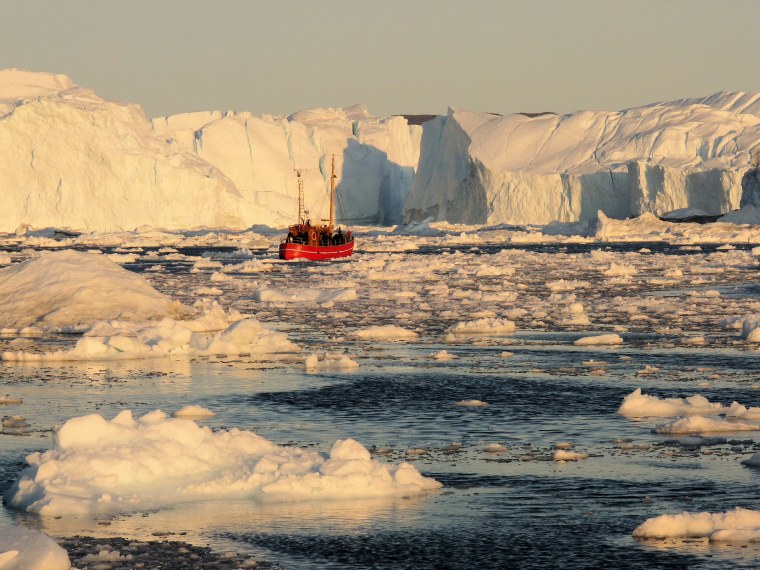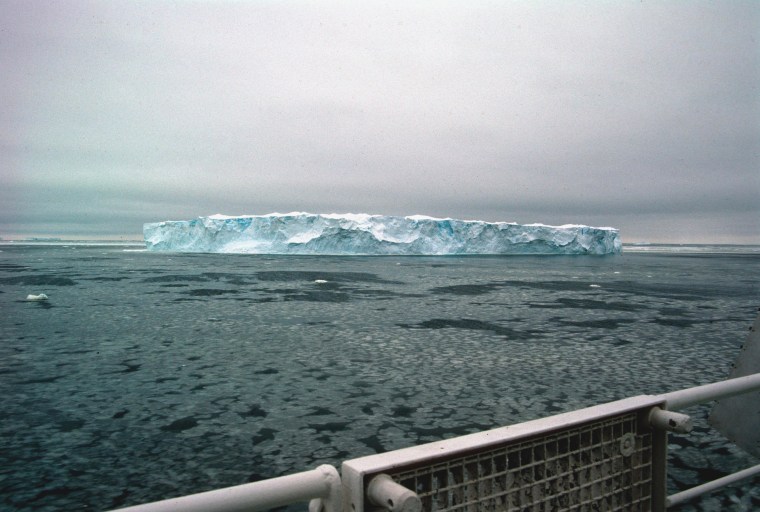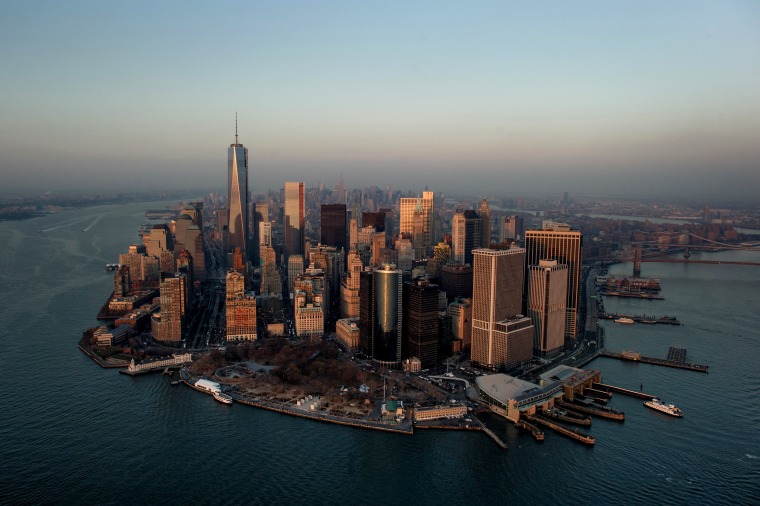The risk posed by rising seas may be even more dire than we thought.
A provocative new study suggests that as Earth’s climate continues to warm and the planet’s ice sheets continue to melt, seas could inundate coastal cities around the world, submerging vast swaths of land and displacing almost 200 million people by the end of the century.
If we continue to take a “business as usual” approach to carbon emissions, sea level rise could plausibly exceed two meters (about seven feet) by 2100, the study showed. A rise of that magnitude — which is more than twice as high as the upper limit predicted in a 2013 U.N. climate assessment — would have “profound consequences for humanity,” the scientists behind the new research concluded.

New York, New Orleans, Miami, Shanghai, Mumbai and some island nations could become permanently flooded, according to that scenario, disrupting economies and displacing up to 187 million people. Almost 1.8 million square kilometers (about 700,000 square miles) of land, including some used for farming, could be permanently flooded.
“It really is pretty grim,” study co-author Jonathan Bamber, a professor of physical geography at the University of Bristol in England, told CNN. “Two meters is not a good scenario.”
That “grim” scenario is just one of several possibilities. But “the oceans are rising fast and will rise faster than we thought a few years ago,” said study co-author Robert Kopp, director of the Institute of Earth, Ocean and Atmospheric Sciences at Rutgers University in New Brunswick, New Jersey. “And there is significant risk of much faster sea level rise if we don’t cut our emissions.”
The projections of the study, published May 20 in the Proceedings of the National Academy of Sciences, differ sharply from those made by the U.N.’s Intergovernmental Panel on Climate Change, which in 2013 predicted that, at worst, the seas could rise by 0.98 meter, or a little over three feet, by 2100.
But some research suggests that the panel has historically predicted lower sea level rise than other groups. What’s more, Kopp said, recent research shows that our understanding of the behavior of the thick ice sheets in Greenland and Antarctica is more uncertain than many scientists had appreciated. Meltwater from ice sheets, which contain more than 99 percent of Earth’s freshwater ice, may contribute to rising seas more than any other factor.
Given the uncertainty about ice sheets, it’s difficult to predict sea level rise with mathematical modeling, the research method that uses historical data to make educated guesses about the future. Instead, the scientists turned to a sort of ice sheet brain trust.
Using a standardized interview technique called structured expert judgment, they asked 22 climate experts to predict the ice sheets’ effect on sea level rise under two possible scenarios. In one, temperatures rose by 2 degrees Celsius (3.6 degrees Fahrenheit), the target detailed in the Paris Agreement, the U.N.’s plan to combat climate change, from 1800 to 2100. In the other, temperatures rose by 5 degrees C (9 degrees F), which the scientists described as “consistent with unchecked emissions growth” over the same period of time.
It was this aggregated forecast that put the worst-case, high-temperature scenario for sea level rise at two meters by 2100, with 1.78 meters attributed to melting ice sheets alone. In the lower-temperature scenario, meanwhile, melting ice sheets would likely contribute no more than 0.81 meter, or about two and a half feet, to sea level rise. But if emissions went unchecked, the scientists predicted, ice sheet meltwater alone could add as much as 7.5 meters (more than 24 feet) to sea levels by 2200.
The researchers acknowledged that structured expert judgment alone isn’t enough to pinpoint sea level rise and that there’s only about a 5 percent chance that the two-meter scenario will come to pass. But, they argued, efforts to protect against rising seas, like sea walls, should take the worst-case scenario into account.

Richard Alley, a geologist at Penn State University, called the research a “sensible” approach to making predictions about sea level rise in the face of uncertainty.
“This is part of the effort to do the best we can to provide information to the public and policymakers when we really can’t meet the normal standards,” said Alley, who wasn’t involved in the new study. After all, he said, “no one has done the experiment of really, really fast warming on a whole bunch of ice.”
Kopp called the new findings “very concerning” but said he remained hopeful that greater effort would be made to curb carbon emissions, reduce deforestation and take other steps to keep global temperatures — and seas — from rising to cataclysmic levels.
“Changing the course of emissions really can significantly affect this issue over the next 80 years,” he said.
Want more stories about the environment?
- 1 million species under threat of extinction because of humans, new report finds
- Your clothes are secretly polluting the environment. Here's why you should be concerned.
- This floating city concept is one way to cope with climate change
SIGN UP FOR THE MACH NEWSLETTER AND FOLLOW NBC NEWS MACH ON TWITTER, FACEBOOK, AND INSTAGRAM.

